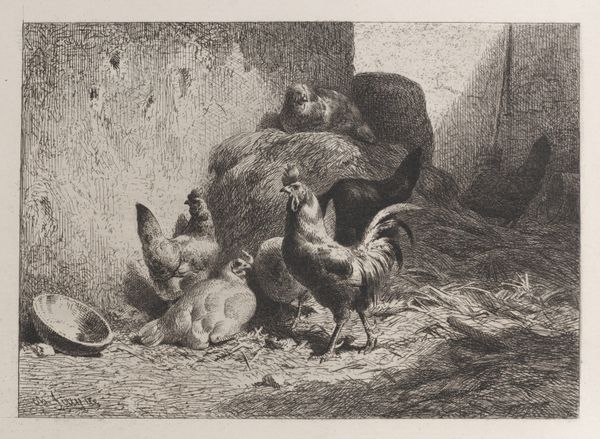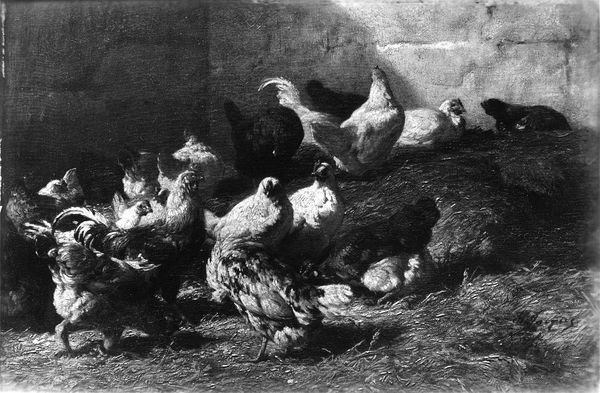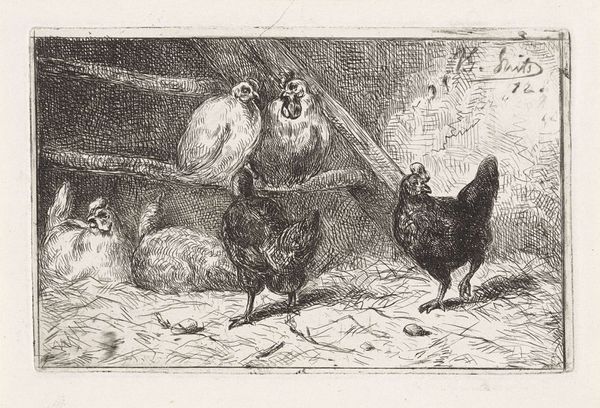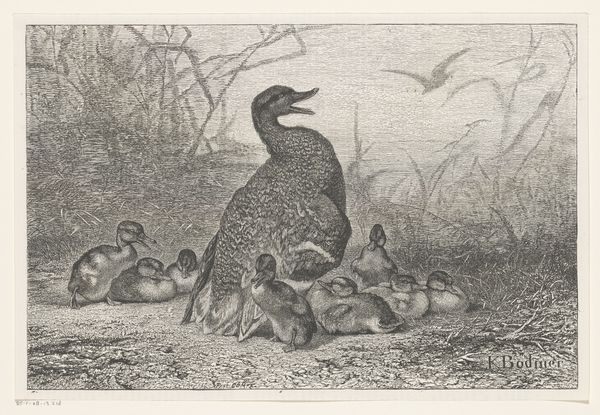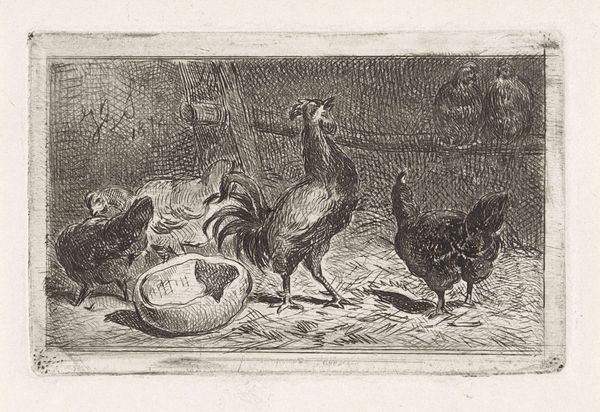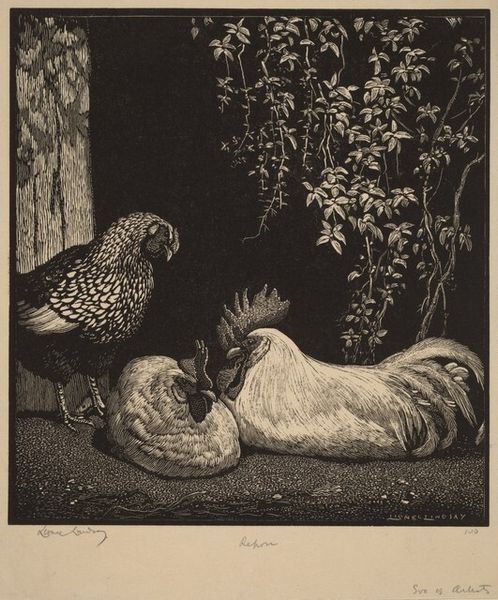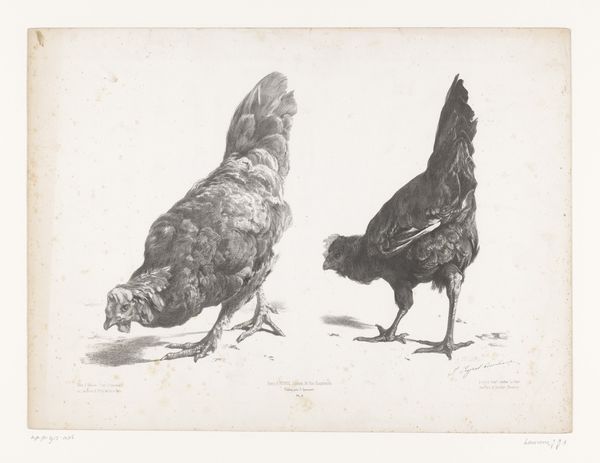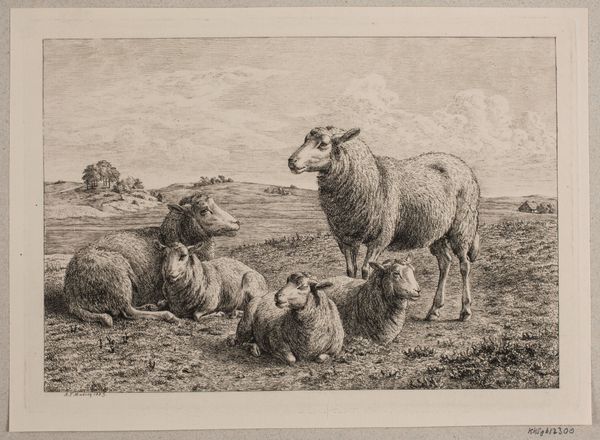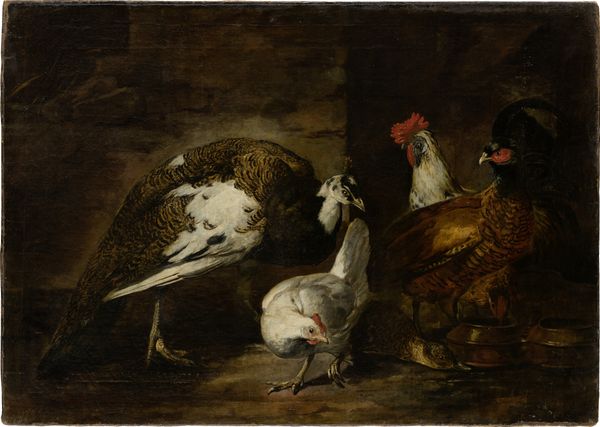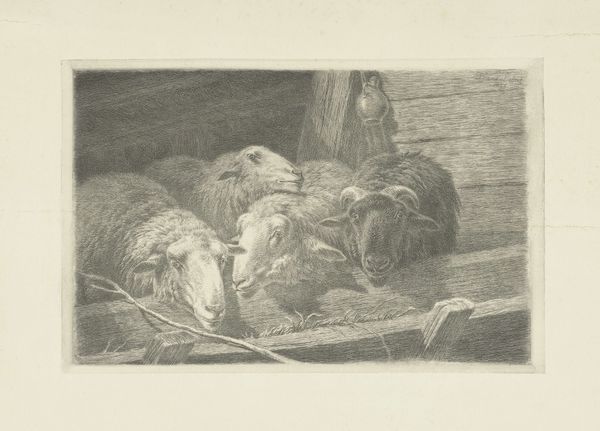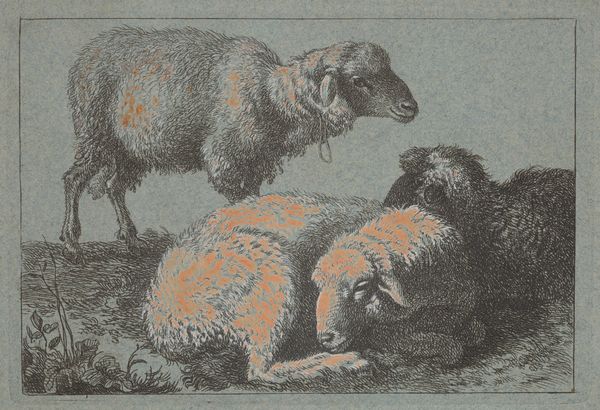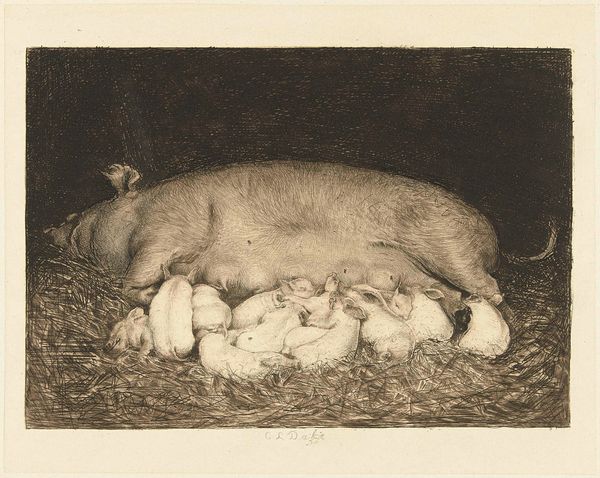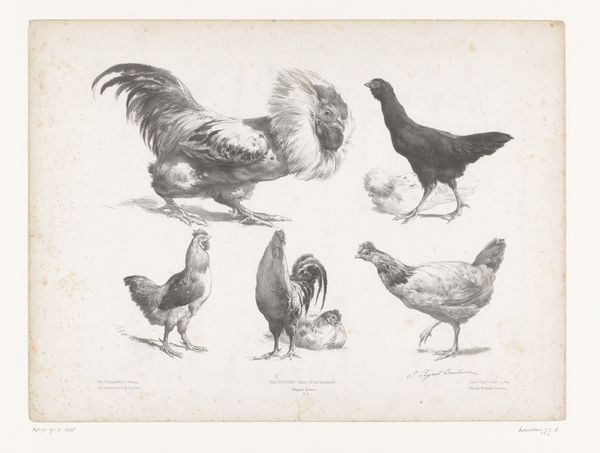
drawing, print
#
drawing
# print
#
impressionism
#
landscape
#
agriculture
#
genre-painting
Dimensions: Sheet: 12 3/16 × 18 3/4 in. (30.9 × 47.7 cm) Plate: 5 13/16 × 9 3/16 in. (14.7 × 23.4 cm) Image: 4 3/4 × 8 1/4 in. (12 × 20.9 cm)
Copyright: Public Domain
Charles Jacque made this print, 'Poules', using etching, a printmaking technique, at some point in the nineteenth century. Jacque was one of the artists associated with the Barbizon School in France who turned away from the city to depict rural subjects. The image shows chickens huddled together, seemingly seeking warmth and protection. In the 19th century, as French society modernized, many artists started looking to the countryside as a symbol of older, more traditional values. Reproducible images like this would have found a ready market among middle-class consumers who sought to affirm their connection to an idea of 'Frenchness'. Prints like 'Poules' offered a nostalgic view of rural life, one that glossed over the hard labor and economic realities of agricultural work. To understand more about such prints and the artists who made them, we can look at period journals, exhibition reviews, and sales records. These sources can reveal the cultural meanings that were attached to images of rural life and the institutions that circulated and legitimized them.
Comments
No comments
Be the first to comment and join the conversation on the ultimate creative platform.
